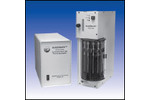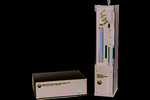- ▶
- Heaters/Source
- ▶
- Agilent Heaters and SensorsMass Spectrometry, Scientific Supplies & ManufacturingScientific Instrument Services 5973 Source Heater Tamper Resistant Allen Wrench 5973/5975 Quad Sensor 5985 Source Heater Assembly Agilent Interface Heater Assembly 5971 Interface Heater

- ▶
- TD
- ▶
- TD-5 (single sample)
- Print Catalog
- ▶
- Catalog Page C1Short Path™ Thermal Desorption TD-5 [C2] Short Path™ Thermal Desorption TD-5 [C3] Short Path™ Thermal Desorption System TD-5 [C4] Short Path™ Thermal Desorption TD-5 [C5] AutoDesorb™ [C6] AutoDesorb™ [C7] AutoDesorb™ [C8] AutoDesorb™ [C9] Short Path™ Thermal Desorption Tubes [C10] Desorption System Fittings [C11] TD1/TD2/TD3/TD4/TD5/ Needles & Seals [C12] AutoDesorb™ Needles, Seals & Connecting Tubes [C13] Adsorbent Resin for Trapping Volatiles [C14] Adsorbent Resin for Trapping Volatiles [C15] Thermal Desorption Conditioning System [C16] Thermal Desorption Conditioning System [C17] Heated Thermal Desorption Sampling Chambers [C18] Extraction Cell for Papers, Polymers & Food Containers [C19] Thermal Desorption Sample Collection System [C20] Thermal Desorption Sample Collection System [C21] Cryo-Trap™ for TD-5 [C22] Cryo-Trap™ for the AutoDesorb™ System [C23] Purge & Trap System [C24] Temperature Controller & Heater Sleeves [C25] Thermal Desorption Accessories [C26] Thermal Desorption Low Flow Air Sampling Pump [C27] Gilibrator™ Air Flow Calibration System [C28] Gilibrator™ Air Flow Calibration System [C29] ALTEF Gas Sampling Bags [C30]

- ▶
- Catalog Page C3 (This Page)
C3
Short Path™ Thermal Desorption TD-5
FAX: 908-806-6631
www.sisweb.com
Theory of Operation
T
he Thermal Desorption Unit sits directly on top of the
injection port of most GC's, where it provides direct des-
orption of both volatile and semi-volatile samples into the
GC injection port and column. The system delivers samples into the
GC along an optimal “short path,” thereby eliminating
transfer lines
and cross-sample contamination issues found in previous systems.
Samples to be analyzed are collected into stainless steel
desorption tubes (or silco-treated)(Fig.1).
A solid sample of inter-
est may be packed directly into the tube and subjected to direct ther-
mal desorption.
Alternately, the tube may be packed with adsorbent
resin such as Tenax™ TA or activated carbon for indirectly trapping
analytes from liquid or air samples.
To analyze a prepared desorption tube (Fig.2), a syringe nee-
dle is first attached to the desorption tube, which is then attached to
the connector tube on the Desorption Unit (#1). The desorption
blocks heat to initial temperature (#2). Carrier gas is sent through the
desorption tube for an initial purge time (#3). The system then injects
the desorption tube into the GC injection port (#4) where flows are
readjusted as required by the method of analysis, i.e. split/splitless,
etc. The hinged heating blocks close around the desorption tube (#5)
to ballistically heat the sample tube, optionally with a temperature
ramp. The combination of the heat applied and the carrier gas flow
through the desorption tube will purge the desired components into
the GC injection port and onto the front of the GC column.
To obtain
sharp chromatographic peaks when desorption typically lasts 5 to 15
minutes, it can be desirable to focus desorbed components at the
head of the GC column. This focusing can be improved by installing
a Cryo-Trap, which cryogenically cools the head of the GC column
(with liquid CO2 or LN2) during desorption to trap desorbed analytes.
After desorption, the Cryo-Trap rapidly heats to volatilize the trapped
analytes and quickly release them through the GC column for sepa-
ration (#6).
Purge
Gas Off
Desorb
Blocks Off
Cryo Off
Purge
Gas Off
Desorb Blocks
Heating
Desorb Blocks
Heating
Cryo Cooling
Cryo Cooling
Cryo Cooling
Purge
Gas On
Purge
Gas On
Desorb Blocks
Heating
Cryo Cooling
Purge
Gas On
Desorb Blocks
Heating
Cryo Heating
Purge
Gas Off
Desorb
Blocks Off
1
2
Detachable
Needle
Quartz Wool
Quartz Wool
Screw Threads
Solid Sample or
Adsorbent Resin
Figure 1 - Desorption (sample) tube
Desorption Unit mounted on an Agilent 6890 GC
Sample Loaded
Temperatures ON
Purge Gas ON
Injecting
Desorbing Sample
GC Analysis
Figure 2 - TD-5 Run Cycle
X
X
3
4
5
6
X
Cross section of thermal desorption tube
Loading of Desorption Tubes for sample analysis
Silco Coated
Stainless Steel
Outer Shell
Silco Coated SS Desorption Tube
 Table of Contents
Table of Contents
(Print Catalog)Table of Contents of the Scientific Instrument Services general catalog volume 36. Print Catalog C. Short Path™ Thermal Desorption SIS Vol. 36 catalog Section C - Short Path™ Thermal Desorption.
Print Catalog C. Short Path™ Thermal Desorption SIS Vol. 36 catalog Section C - Short Path™ Thermal Desorption.Short Path™ Thermal Desorption TD-5
(Catalog C2)Short Path™ Thermal Desorption TD-5
(Catalog C3)Short Path™ Thermal Desorption System TD-5
(Catalog C4)


